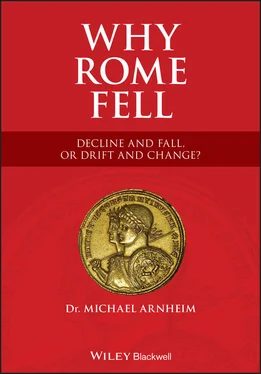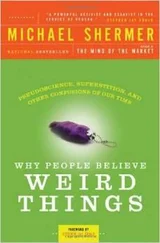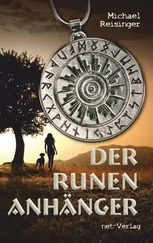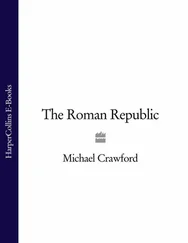Michael Arnheim - Why Rome Fell
Здесь есть возможность читать онлайн «Michael Arnheim - Why Rome Fell» — ознакомительный отрывок электронной книги совершенно бесплатно, а после прочтения отрывка купить полную версию. В некоторых случаях можно слушать аудио, скачать через торрент в формате fb2 и присутствует краткое содержание. Жанр: unrecognised, на английском языке. Описание произведения, (предисловие) а так же отзывы посетителей доступны на портале библиотеки ЛибКат.
- Название:Why Rome Fell
- Автор:
- Жанр:
- Год:неизвестен
- ISBN:нет данных
- Рейтинг книги:3 / 5. Голосов: 1
-
Избранное:Добавить в избранное
- Отзывы:
-
Ваша оценка:
- 60
- 1
- 2
- 3
- 4
- 5
Why Rome Fell: краткое содержание, описание и аннотация
Предлагаем к чтению аннотацию, описание, краткое содержание или предисловие (зависит от того, что написал сам автор книги «Why Rome Fell»). Если вы не нашли необходимую информацию о книге — напишите в комментариях, мы постараемся отыскать её.
Why Rome Fell: Decline and Fall, or Drift and Change?
Why Rome Fell
Why Rome Fell
Why Rome Fell — читать онлайн ознакомительный отрывок
Ниже представлен текст книги, разбитый по страницам. Система сохранения места последней прочитанной страницы, позволяет с удобством читать онлайн бесплатно книгу «Why Rome Fell», без необходимости каждый раз заново искать на чём Вы остановились. Поставьте закладку, и сможете в любой момент перейти на страницу, на которой закончили чтение.
Интервал:
Закладка:
Another heritage of Byzantium which cannot be ignored is, ironically, the result of its demise, namely the rescue of thousands of Classical Greek texts, which were smuggled to the West after the fall of Constantinople in 1453 and are thought to have had some effect in developing the Italian Renaissance.
None of these features, however, really provides much continuity with the Byzantine Empire.
Gothia or Romania?
The position in regard to the western empire is very different. As the Visigoth King Athaulf (r. 411–415) recognized, no “barbarian” kingdom of Gothia would ever come into existence (Orosius 7.43.4–6). The only “barbarians” who gave their name to a country were the Franks and the Angles though the language of France is a Romance language, like those of most of the rest of the western empire, and that of England (an integral part of Britain, from the area’s Roman name) has become suffused with Latin loanwords
The Roman Catholic Church, with its subdivision into dioceses and provinces, terms taken over directly from the Roman Empire, still has its headquarters in Rome, under a bishop who is called in Latin by the same title as the Roman emperor as head of the old pagan state religion: Pontifex Maximus (chief priest). Politically, too, the image of the western Roman Empire survives in the ideal of a united Europe. And a modern version of Roman Law still dominates the continent.
Three Revolutions
Constantine initiated the dominance of Christianity in the Roman world, though he was not actually baptized until on his deathbed in 337, and though Christianity did not become the sole official religion of the Empire until 380. The significance of this is that it replaced the tolerant communal Roman pagan state religion with an inherently intolerant creed religion, which has remained the dominant religion in Europe ever since. This represents both continuity and change, a major break with the past on the part of Constantine and his successors, and continuity from then on down to the present.
That revolution also had two major continuing spin-offs, namely the rise of Islam, a creed religion that became intolerant on the Christian model, and rabbinical Judaism, which, under the influence of Christianity, changed from a tolerant communal religion into an intolerant quasi-creed religion. (See Chapter 10.)
Constantine’s second revolution was the establishment of Constantinople, which would come to be the permanent Christian capital of the Byzantine Empire until its fall to the Ottomans in 1453.
By bringing members of the senatorial aristocracy back into high office, Constantine effected a third revolution, which endorsed, boosted, bolstered, and reactivated the aristocratic ethos that had been the hallmark of Roman society from the early Republic. This revolution, too, proved long-lasting, surviving until the French Revolution, and still not entirely extinct. (See Chapter 5.)
Structural or Individual?
One important question that has not received sufficient attention is how much of the continuity of the western empire was structural, and how much was personal. We know, for example, that aristocracy and the aristocratic ethos survived the dissolution of the western empire. But who were the aristocrats who carried on this Roman tradition? Were they descendants of the old Roman senatorial aristocracy? Or were they “barbarian” aristocrats aping Roman manners and customs? The evidence is patchy, but the answer would appear to be a mixture of the two. (See Chapter 5.)
The Use of the Past
Tacitus claimed to have written sine ira et studio , (without anger or passion), or, in other words, without partiality either positive or negative. The great Greek historian Thucydides (c. 460–-c. 400 BCE) wrote his Peloponnesian War in the belief that an accurate knowledge of the past would be useful for the future. (Thuc. 1.22.4.) The first prerequisite to this end must, therefore, be accuracy, and, as far as possible, objectivity. True objectivity is probably not an attainable goal, but that does not exempt historians from at least making the attempt.
The starting point must be choice of language. For example, the phrase, “the unnerving but mercifully brief reign of Julian” could not be anything other than overtly subjective, judgmental, hostile, and emotive (Brown 1997a, p. 638)—and even more so than “Williamanmary was a Good King,” in 1066 And All That , the witty parody of traditional British historical writing, written by W.C. Sellar and R.J. Yeatman and published in 1930.
Because Julian “the Apostate” (r. 361–363) is known chiefly for his anti-Christian religious policy, it can safely be concluded that the negative description of his reign is motivated by disagreement with that policy, which ties in with the same author’s pro-Christian special pleading, and otherwise rose-tinted vision, inevitably plunging him headlong into a distorted view of the period. (See Chapter 12.)
Avoidance of overtly subjective, judgmental, and emotive language is important in itself, but also for another reason, namely, to use the study of the past as a tool for the future. But this can only be done on the basis of a tested empirical framework for the comparative study of different societies. There is nothing more disappointing than to see solid historical research run into a blind alley, for want of a properly analyzed framework, as happened to Sir Ronald Syme’s potentially valuable work on Augustus. Having correctly characterized Augustus’s rule as a monarchy, Syme opined that it was an oligarchy on the basis of a supposedly general “law” that “A monarchy rules through an oligarchy” (Syme, R., 1939, p. 8.)—a muddled conflation of two diametrically opposed forms of government. (See Chapter 1.) Chapter 6illustrates how a correct formulation of power structure can be applied to different historical periods.
1 Rome From Monarchy to Monarchy
This chapter is an analysis of the power structure of the Roman state from its foundation, traditionally dated 753 BCE, to the accession of the Emperor Diocletian in 284. The chapter is divided into two sections. Section A is an analytical narrative, while Section B is a discussion of some of the main discordant views propounded in modern writings .
My own view is that the early monarchy, on which there is very little reliable evidence, was replaced around 509 BCE by a “republic” dominated by an oligarchy or aristocracy. Thus far, the power structure of the Roman state conforms to a universal pattern that I identified in my Two Models of Government, first published in 2016: monarchy succeeded by an oligarchy or aristocracy. By “oligarchy”, I mean government by an elite minority, and “aristocracy” refers to a hereditary oligarchy .
The accession of Julius Caesar’s heir, known to history as Augustus, replaced the republican oligarchy with a thinly disguised monarchy that was able to satisfy, or at least placate, all sectors of society and to provide a stable form of government that lasted for some three hundred years .
Section A. From Romulus to Diocletian
In the beginning, Rome was a monarchy. According to tradition, Rome, whose conventional founding date was 753 BCE, was first ruled by a succession of seven kings, starting with the eponymous Romulus, who, if he existed at all, must have been named after the city rather than the other way round. The whole period of the monarchy is extremely shadowy. Our main authority for it is the Roman Historian Titus Livius, or Livy, whose great Roman History, titled Ab Urbe Condita (“From the Foundation of the City”), was written some 500 years after the fall of the monarchy, which is commonly dated to 509 BCE. Livy felt obliged to relate traditional tales and legends about the early history of Rome, but he also had access to earlier historical accounts, and he actually provides a list of no fewer than a dozen authors’ names, the earliest being Quintus Fabius Pictor, whose history of Rome, written in Greek in around 200 BCE, survives only in fragmentary form.
Читать дальшеИнтервал:
Закладка:
Похожие книги на «Why Rome Fell»
Представляем Вашему вниманию похожие книги на «Why Rome Fell» списком для выбора. Мы отобрали схожую по названию и смыслу литературу в надежде предоставить читателям больше вариантов отыскать новые, интересные, ещё непрочитанные произведения.
Обсуждение, отзывы о книге «Why Rome Fell» и просто собственные мнения читателей. Оставьте ваши комментарии, напишите, что Вы думаете о произведении, его смысле или главных героях. Укажите что конкретно понравилось, а что нет, и почему Вы так считаете.












